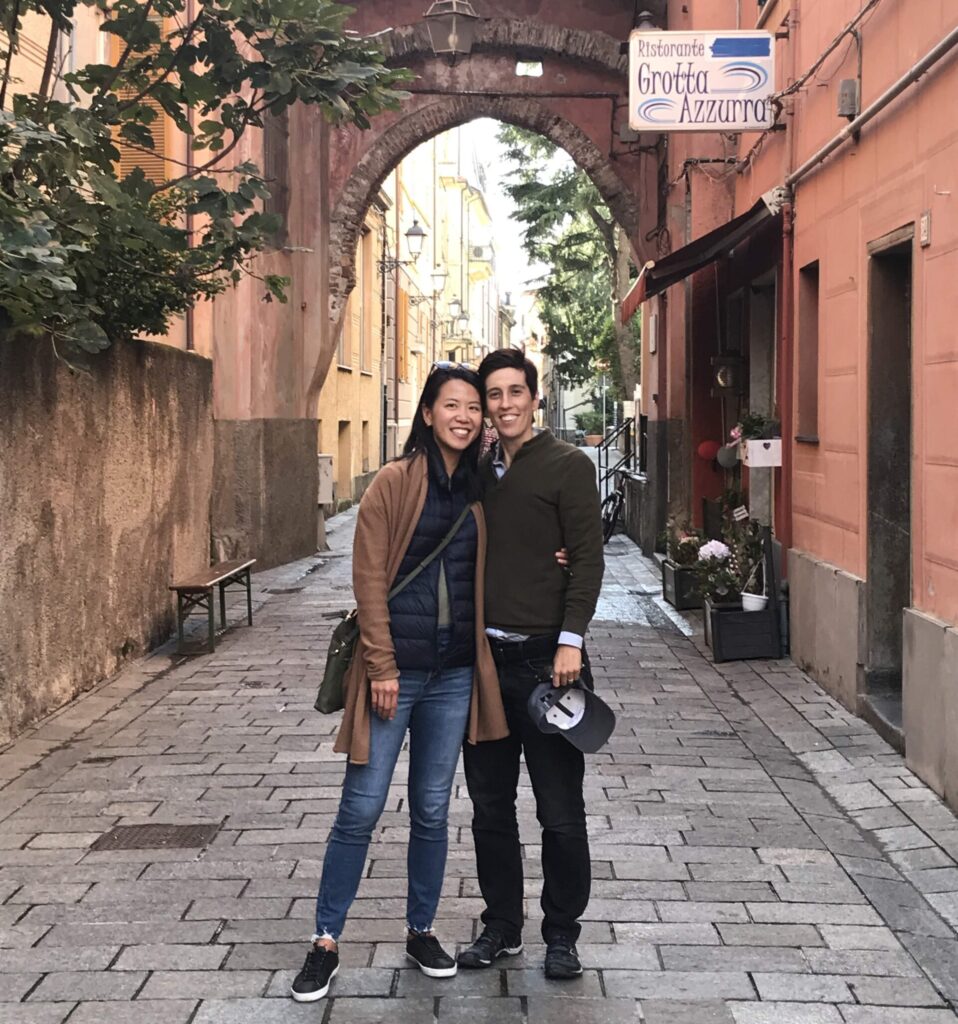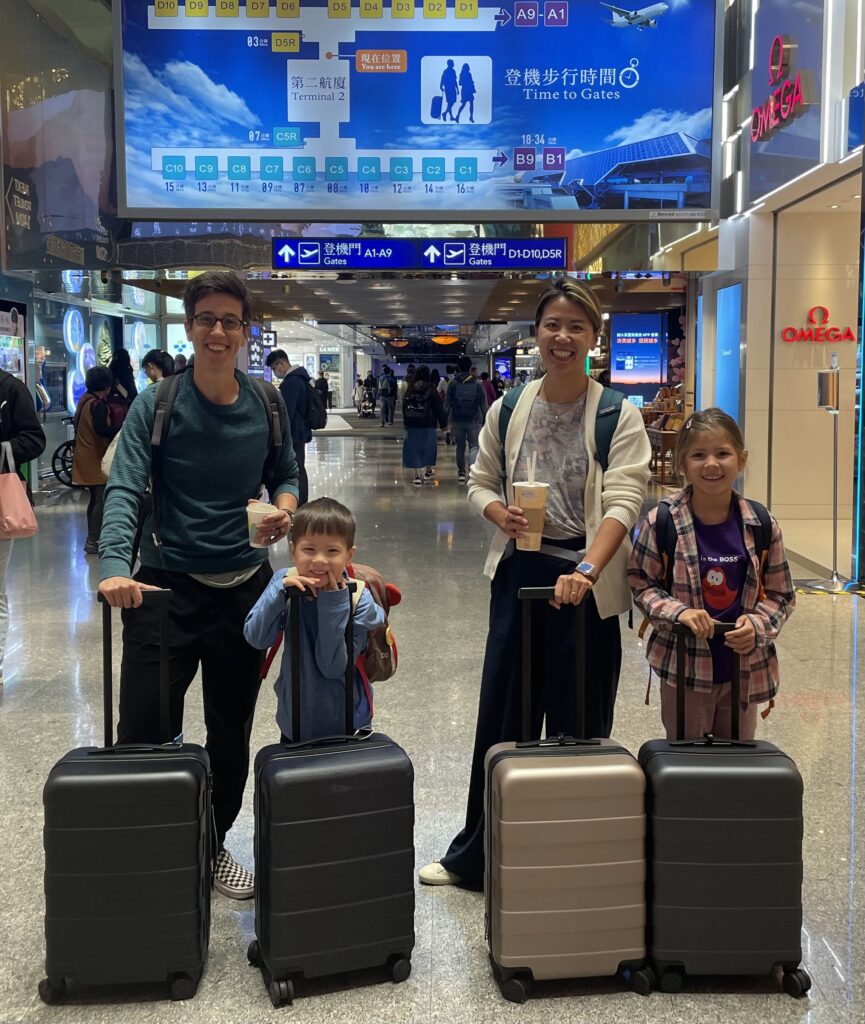How to Save Money on Luxury Vacations: Smart Tips from a Financial Advisor Who’s Traveled the World
Travel is one of the greatest joys of life—but it can also be one of the biggest budget busters if you’re not careful. As a couple who has traveled extensively with our kids (over 30 countries and counting), we’ve learned how to explore the world without draining our savings. Whether you’re dreaming of a European vacation, a national park road trip, or a long-haul family adventure, smart planning can help you stretch your dollars further.
Our Travel Story
 In 2012, we took a sabbatical to travel to 15 countries in Asia, Africa, and South America while making a documentary about LGBT leaders around the globe.
In 2012, we took a sabbatical to travel to 15 countries in Asia, Africa, and South America while making a documentary about LGBT leaders around the globe.
In 2016, Jenni’s job took us to Switzerland for three years, where we soaked up all things European. Then in 2020, we moved to Taiwan to give our kids a bilingual education and explore Asia.
Today we live in San Francisco and travel 2 months per year taking our work on the road. Travel hacking and smart planning have helped us make it possible—without compromising our long-term financial goals.
Here are our favorite strategies, based on real-world experience (with no affiliate links or fluff).
1. Set a Budget and Define What Makes the Trip a Success
For high earners, travel often becomes one of the biggest discretionary expenses—but also one of the most rewarding. The key is to spend intentionally, not automatically. Here’s how to align your travel spending with your values and your long-term financial goals:

- Start with your “trip success criteria.”
Before booking anything, ask: What do I want this trip to give me? Is it rest, adventure, connection, cultural immersion, or reconnection with family? Naming your intention upfront helps you optimize your spending for joy—not status.
- Rethink What Luxury Means.
It’s easy to default to the most expensive hotel in the most talked-about location. But true luxury often lives off the beaten path. A quiet ryokan in the Japanese mountains may offer more rest than a generic resort with a pool. A stylish apartment in Buenos Aires—at half the price of Europe—can feel far more magical than a crowded week in Barcelona. Or skip the airport altogether and choose a peaceful spot just a short drive away — maximizing your time, comfort, and peace of mind. When you define luxury on your own terms, you open the door to deeper experiences, real connection—and often, surprising savings.
- Build a dedicated travel fund.
Treat travel like any other meaningful financial goal. Create a “Freedom Fund” or “Adventure Bucket” and contribute automatically—just like you would with a 401(k) or college fund.
- Decide your annual travel budget in advance.
Whether it’s $10K or $30K per year, put a cap on it. This prevents you from accidentally over-spending throughout the year on smaller trips that don’t align with your bigger dreams. And importantly, that number should fit within your overall financial plan. When travel spending aligns with your broader goals, you get to enjoy it guilt-free.
- Spend early and generously on the parts of the trip that fulfill your intention.
If your goal is rest, splurge on a serene location or extra night. If it’s connection, prioritize shared experiences or accommodations that allow for togetherness. This is the difference between a trip that feels “fine” and one that feels unforgettable.
2. Use Credit Cards and ATMs Smartly Abroad

Swiping your card or withdrawing cash overseas can be surprisingly costly if you’re not careful. Foreign transaction fees, ATM surcharges, and poor currency exchange rates can quickly add up. Here’s how to spend smarter while traveling:
- Use credit cards with no foreign transaction fees. These can save you 1–3% on every purchase. High-quality travel cards often waive these fees, but double-check before your trip.
- Avoid dynamic currency conversion (DCC). When you’re asked whether you want to be charged in U.S. dollars or the local currency, always choose local currency. Choosing USD lets the merchant or ATM provider set the exchange rate—and it’s almost always worse than what your bank would offer.
- To get cash, Use ATMs—not currency exchange counters. Airport exchange booths offer some of the worst rates around. ATMs typically give you access to the real exchange rate, and with the right debit card (like Schwab’s), you can even get 100% of ATM fees reimbursed worldwide.
3. Learn to Earn and Redeem Points Like a Pro (But Don’t Go Overboard)

Many years ago, we took a free online course on travel rewards, and it helped us make smarter decisions about how to earn and use credit card points. Since then, each year:
- We use points to book a free international flight for our family of four
- We enjoy many free hotel nights through strategic redemptions
But here’s our honest take: you don’t need to master the entire points game to get great value.
If you’re a high earner, consider the opportunity cost of spending hours researching transfer partners or redemption charts. That time could be better used growing your career or enjoying your weekend.
Our advice? Stick to the low-hanging fruit.
- Get one or two high-value travel rewards credit cards with a big sign-up bonus (e.g. Chase Sapphire)
- Redeem points when cash prices are high (think: international flights or aspirational hotels)
- Use a free tracker to stay organized and avoid point expiration
- Consider using a flight concierge service like Point Me to help you maximize redemptions and uncover obscure routes without spending hours digging through airline sites
If you love optimizing and have flexible travel plans, go for it. But for most high-income households, the 80/20 rule applies: a few smart systems go a long way.
4. Get Creative with When, Where, and How Long You Travel
 Flexibility is one of the most powerful (and underused) tools for saving money on travel. Here’s how to stretch your budget without sacrificing quality:
Flexibility is one of the most powerful (and underused) tools for saving money on travel. Here’s how to stretch your budget without sacrificing quality:
- Let airfare guide your destination. Use Google Flights’ Explore feature to browse regions and flexible dates—you might uncover hidden gems. We once found a cheap nonstop flight to Borneo while in Asia and added an unexpected (and unforgettable) side trip we never would’ve planned otherwise.
- Travel during off-peak times. Shifting your trip to shoulder season or mid-week can lead to major savings on both flights and lodging, and tools like Google Flights can help you identify the cheapest windows.
- Get creative with where you stay. Swapping homes, booking apartment-hotel hybrids, or even renting out your own home while you’re away can dramatically reduce lodging costs and make longer trips more affordable.
- Blend work and travel. If you have remote flexibility, consider extending your trip by working part-time while abroad, especially in lower-cost destinations where your dollars stretch further.
Make Travel Part of Your Bigger Financial Plan
Travel doesn’t need to be extravagant to be luxurious—or financially disruptive to feel indulgent. When you plan with intention, align your spending with what truly matters, and give yourself permission to define luxury on your own terms, travel becomes more than just an escape. It becomes part of a life well-lived.
Want more real-world travel and money tips? Subscribe to our newsletter and follow our adventures—no fluff, just helpful hacks.
